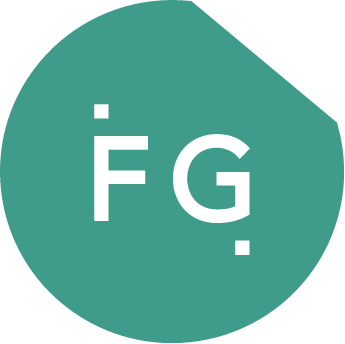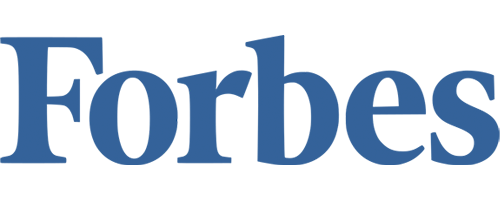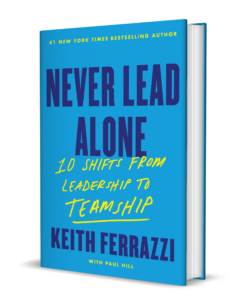Most organizations are frustrated with the level of returns from their AI investments. They’re buying expensive tools, running scattered pilot projects and wondering why adoption, let alone transformative results, remain elusive. The problem isn’t the technology. Too many leaders are relying on traditional change management thinking and old-school training methodologies. The world’s elite organizations are cracking the code of AI by doing more than implementing better tools, they’re re-engineering the way they operate and building grassroots movements of change inside their organizations. Here are the four critical shifts that separate AI winners from the rest:
1. Build An AI Movement That Can’t Be Stopped
Forget traditional technology rollouts; they fail miserably with AI, frankly, weak software adoption of the past has not been much to brag about either. The winners build unstoppable momentum from the ground up:
Surface your super users. Who’s already making AI work? Find them. They’re already in your organization, experimenting and creating value while everyone else is still taking courses. Invite employees to share how they’re using AI right now. This isn’t a suggestion box exercise—it’s identifying your natural innovators who’ve already cracked the code.
Create peer coaching circles. Four super users, meeting weekly. That’s the magic formula. Put your super users in these small groups where they share practices, coach each other, and document what actually works. No consultants, no outside experts—just practitioners elevating the winning practices of other practitioners. And if you feel you haven’t hit on winning practices from the internal team, that’s when you seek inspiration from outside expertise.
Cross-pollinate ruthlessly. Get these groups presenting their findings to others. Document everything in an accessible knowledge base. Then—this is critical—remix the groups. Break them up and reform them with new members. Do this systematically until consistent, proven methodologies emerge organically. Think of it like martial arts; the black belts are those teaching. The yellow belts are those who raise their hands and want to join the movement and show up to learn, the brown belts are those who stick with it and innovate new practices with real outcomes.
Scale through peer-to-peer networks. Your super users become coaches for others. Every expert takes on a small group of volunteers hungry to learn. Knowledge cascades through your organization with minimal central coordination or mandates.
This isn’t theoretical. This approach works because it taps into fundamental human psychology—people adopt what peers they respect are using, not what management mandates. This is how movements begin from the ground up.
2. Rethink Your Workflows & Business Models
AI’s real power comes from fundamentally reimagining how work gets done across roles and functions —not just adopting Ai to improve the productivity of a particular role, and merely doing the same things faster.
The question becomes: How do you engage people in the discussion about workflows? You engage them in the co-creation. You need to share a powerful question days or weeks before the meeting, asking for responses in a shared doc: how can AI reinvent some of our most important workflows? Engage them in the exciting journey of taking that hill together—they need to define what big hills need to be taken. The worst thing you can do is call a meeting—it’s the lowest and least effective form of collaboration that exists today. This isn’t just another brainstorming exercise.
Effective Collaborative Problem-Solving (CPS) is a structured high-return practice that my research shows dramatically increases both inclusion and innovation:
1. Leverage asynchronous collaboration: Send out a shared document two weeks before a meeting with 1-2 big questions for all to answer and read before gathering. These questions might be:
- How is AI impacting your roles and/or how are you using AI now?
- What workflows should we fundamentally rethink using AI?
- How does AI impact our business model or enable others?
2. Broaden participation: Include perspectives from across functions, levels, and even external partners. The boldest innovation often comes from unexpected sources.
3. Focus on outcomes, not activities: Challenge teams to reimagine workflows based on desired outcomes rather than existing processes and, then, ensure there is a way to measure those outcomes.
Any of these questions is accompanied by a Google Sheet or shared spreadsheet that lists the names of everyone attending and space for people to record their insight and answers before the meeting. It is encouraged that everyone draws in data or insight from their wider teams. One thing I often tell teams about the benefit of Async CPS and involving wider teams in advance is that, traditionally there is a live debate in the room that comes to a conclusion, but then later team members seem to backslide from their commitment. Sometimes this is a problem of candor and a lack of original commitment. But often it is because when team members have returned to their wider teams, they have been made aware of issues they were unaware of that put them in a new state of disagreement. This async process avoids that and ensures that all available data is clear up front so we can land the agreement once and for all. Google Docs and the ability to respond, resolve, and revisit comments stands as a permanent record or progress on a project—an audit trail of decision-making that can be retraced by the team and other teams in the future.
Once everyone has read everyone’s input, they come to the meeting prepared to dive in. Then, just before the meeting, everyone reads all the final comments, and the leader of the meeting decides:
1) What is the agenda we actually need to land the plane? Sometimes the item has already been resolved.
2) Who really needs to be involved? Often it’s a much smaller group that contributes to the reduction of meetings on all of our calendars, upward of 30 percent.
3) Or do we go straight to giving “Yes, No, Maybe” feedback to everyone? (“Yes, we will do this,” “No, we won’t do this for this reason,” and “Maybe, we will study this.”) Then we have the meeting to stress-test the final conclusions one more time and land the plane.
This approach enables organizations to move beyond incrementalism to radical reinvention. One international manufacturer I worked with completely reimagined their customer support workflow using this approach—cutting resolution time while increasing satisfaction scores.
But you won’t get there through traditional meetings and brainstorming sessions. You need structured asynchronous work, followed by focused collaboration in small breakout groups.
3. Redefine Your AI Teams
Last year a group of executives who call themselves the Radical Innovators Collaborative came together frequently to define where the biggest breakthroughs were being seen in the leverage of AI in the workplace. Companies like Kearney and Distyl showed their progress working on supply chain re-engineering in an AI world, and where we found the greatest breakthroughs were when the most diverse perspectives were brought to bear. If the supply chain organization led the transformation alone, the results were less impactful than if a true co-elevating partnership between sales (which was doing the forecasting), procurement, manufacturing, and the CIO and the change management enablement function partnered in the most co-creative way and diverse points of view and looked at the problem. This is what it takes. Radical curiosity of looking end-to-end from all vantage points to radically re-engineer the workflows.
The key point is that your AI team isn’t your tech team; it’s everyone (including you) and it spans organizational boundaries. For each major AI initiative—what I call “Big Hills”—you need three distinct groups:
Relationship Action Plan (RAP): Document every relationship critical to success. Rate your current connection quality from -1 (actively opposed) to 5 (true ambassador). Prioritize improving the relationships that will make or break your initiative.
Don’t fall into the common trap of organizing around existing organizational structures. Organize around outcomes. Build cross-functional, multilevel teams focused on solving specific problems, not representing departmental interests.
Core team: These individuals own the initiative’s success, with dedicated time allocation and clear accountability. Don’t make the mistake of staffing this exclusively with technologists.
Engaged team: Map out the critical stakeholders whose support, expertise, or influence you need. This includes the quiet voices with crucial context and the loud detractors who can derail everything.
The strength of your relationships determines the success of your AI initiatives. It’s that simple.
4. Shift From Individual to Team Resilience
Transformation initiatives often fail because people get tired, overwhelmed, and resistant. Most leaders respond by focusing on individual resilience, sending people to workshops, offering wellness programs or encouraging a person to take some time off if necessary. But that way of thinking about resilience misses the point entirely.
The organizations that will succeed with AI transformation are those that understand resilience is a team sport. Our research shows only 14% of team members feel they have a collective responsibility for each other’s energy and well-being. That’s a massive missed opportunity.
Elite teams use targeted practices to build collective resilience:
Energy Check-ins: Begin meetings by asking team members to rate their energy level from 0-5 and briefly explain why. The opportunity to share and be vulnerable creates transparency about capacity and challenges, allowing teams to adapt and support each other.
Peer Celebration: Make it a monthly practice where each team member specifically recognizes the contributions of others. This isn’t generic praise—it’s targeted appreciation that reinforces the behaviors driving your transformation.
These practices aren’t optional niceties. They’re the foundation of psychological safety that enables bold experimentation and candid feedback—both essential for successful AI implementation.
Activating Your AI Team
The organizations seeing the greatest returns from AI aren’t distinguished by their technical expertise. They’re distinguished by what I describe in my new book, Never Lead Alone, as “Teamship”—the ultimate competitive advantage that’s a shift from top-down leadership to peer-to-peer teams sharing the leadership load and who are committed to lifting each other up while challenging each other to achieve world-class performance.
The AI revolution will separate winners and losers in every industry. The winners won’t be those with the most advanced tools or biggest budgets. They’ll be organizations that master these four leadership shifts—building movements, reimagining workflows, assembling the right teams, and creating collective resilience.
The technology is available to everyone. The leadership approach is what makes the difference when it comes to cracking the code of AI.






